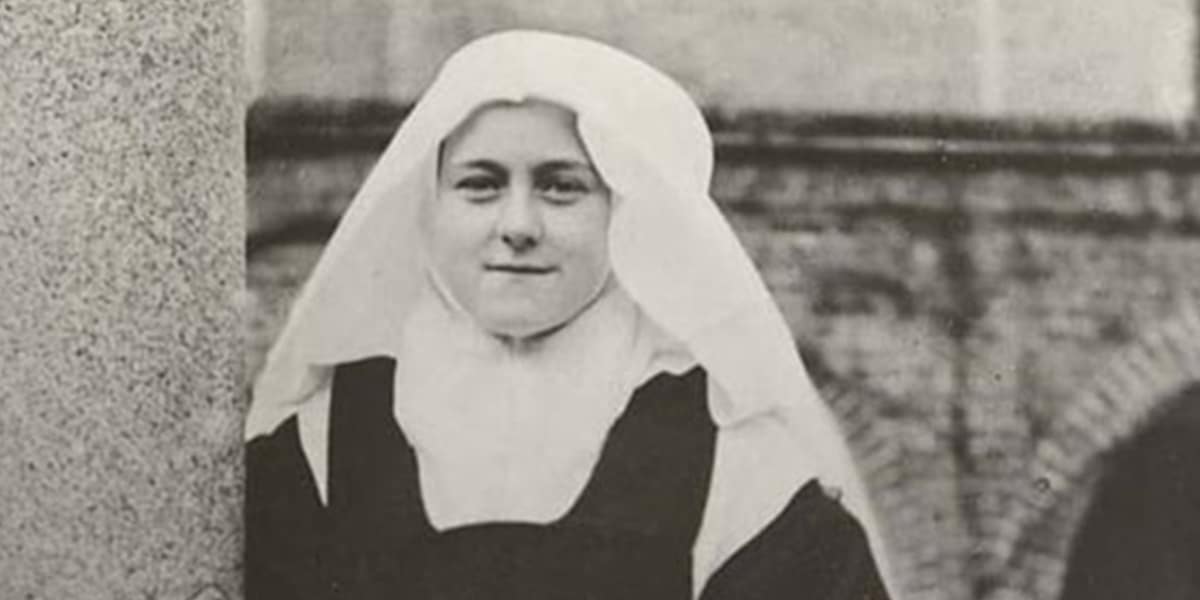The Little Flower left a legacy of love and faith still cherished to this day.
Thérèse of the Child Jesus and the Holy Face was buried in the Lisieux municipal cemetery on October 4, 1897. She was the first to be buried in the new plot her monastery had purchased in response to the city’s new legislative directives prohibiting interment inside the cloister.
In view of what took place after Thérèse’s death, we can now say that the new directives were providential, since they enabled hundreds of thousands of pilgrims to visit her grave over a period of twenty-five years. Had Thérèse been buried inside the cloister, this would never have been possible. Only in 1923 on the occasion of her beatification were her mortal remains transferred to the Carmelite chapel where they are kept to this day.
When speaking of Thérèse’s relics, we must return to the initial stage of their veneration in the town cemetery. Everything began there, to the point that Thérèse’s grave became the cradle of the pilgrimages. But isn’t this the case with Rome, Compostela, and so many other shrines spread throughout the world?
Anthropologists have taught us that burial is an indubitable sign of the presence of human beings, because only humans bury their own. The Church respects the custom of gathering to pray in the presence of the mortal remains of those we have known and loved. When each year millions of men and women of every culture and social condition visit cemeteries, they draw near the “relics” (that is, the remains) of their dear ones. We understand well enough that we do not really rejoin our loved ones there, but we are not pure spirits and we need signs.
The saints’ relics are poor and fragile signs of what went to make up their bodies. When we are close to their relics we can more easily evoke their human condition: that with their own bodies they acted, thought worked, and suffered.
At times God wishes to use such tenuous and seemingly foolish signs to manifest his presence and make his power and glory shine forth. It is God in fact who works through these signs. Here we enter into the perplexing divine logic, different from that of the world. The apostle Paul reminds the Corinthians of this: “Rather, God chose the foolish of the world to shame the wise, and God chose the weak of the world to shame the strong” (1 Cor 1:27). But the same apostle had just declared; “For the foolishness of God is wiser than human wisdom, and the weakness of God is stronger than human strength” (1 Cor 1:25).
To return to Thérèse’s case, it is a fact that when people stand in the presence of her mortal remains or have some contact with her poor relics, as with petals from an unpetalled rose, God, who received through her humanity so many signs of love, is pleased in turn to manifest his love through her bodily remains.
From these poor signs, God’s salvific power reveals and unfolds itself. To become convinced it is enough to read the many volumes recounting favors and cures obtained through contact with Thérèse’s relics, as well as the abundant correspondence that arrives daily in Lisieux.
And who can name all those who cherish in their wallets or among their personal papers an image bearing the words “cloth touched to the relics of the Saint?” Truly we find ourselves in another logic, arising from the words of Jesus: “I give you praise, Father, Lord of heaven and earth, for although you have hidden these things from the wise and the learned you have revealed them to the childlike” (Lk 10:21).
Text by Raymond Zambelli from Saint Thérèse of Lisieux: Her Life, Times, and Teachings, edited by Conrad De Meester. Copyright 1997 by Institute for Carmelite Studies. Used with permission.









1 thought on “Understanding Saint Thérèse’s Relics”
I have always loved St. Therese even as a child. I just finished watching the movie “Therese” on u tube